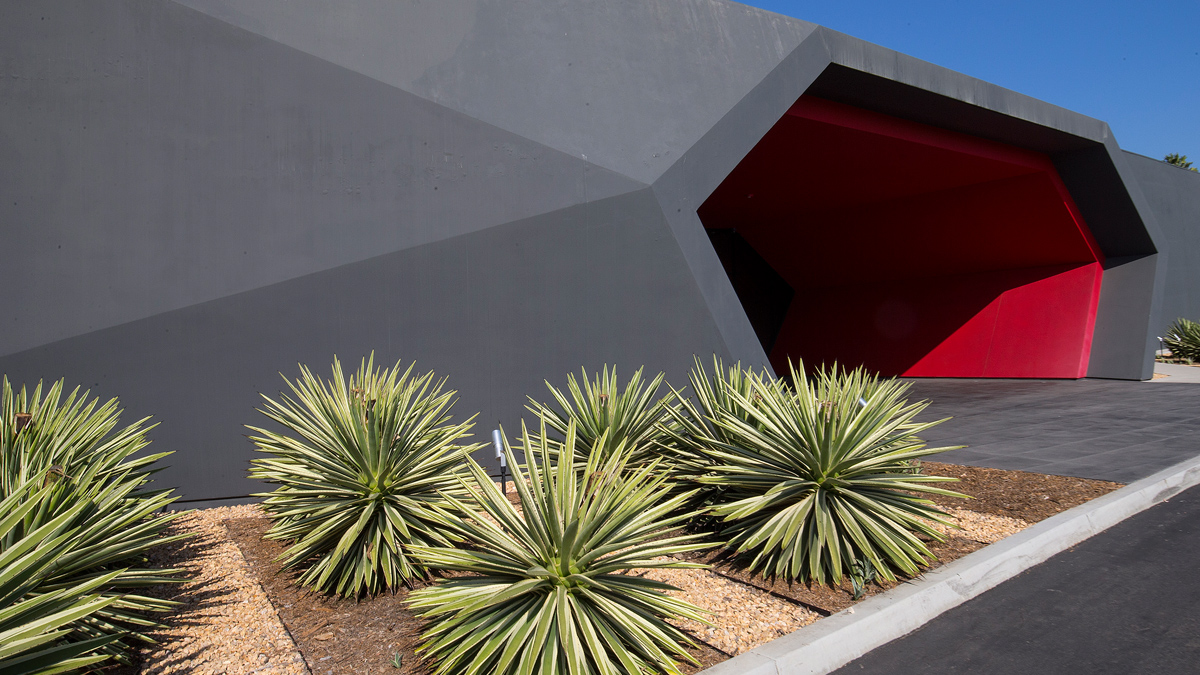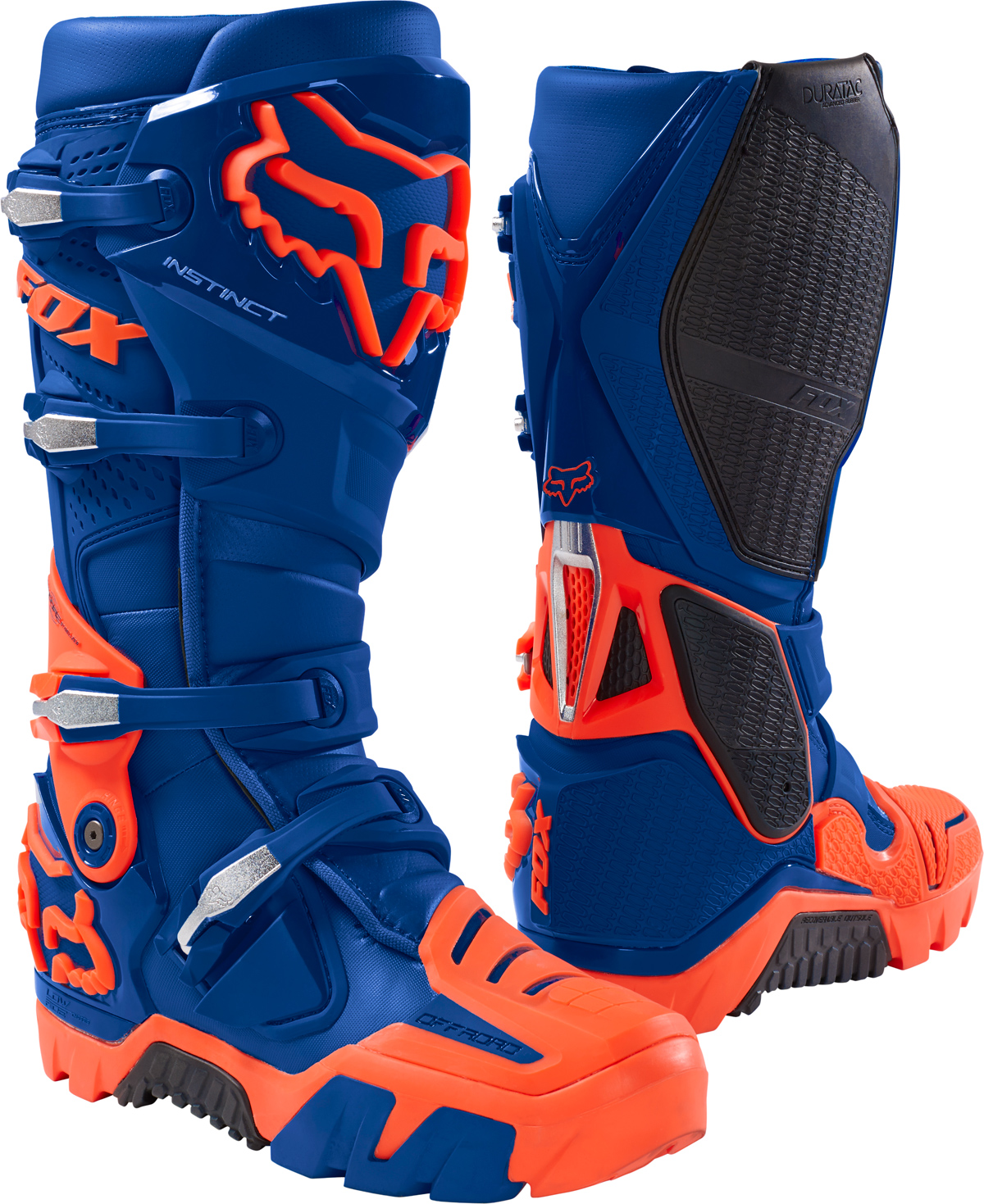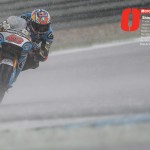OK, we’ve tried Fox’ new Instinct boot – the Legion Enduro model – and as well as being perhaps the trickest and coolest piece of riding footwear we’ve worn they were also damn comfortable. Luckily we were able to chat in detail about perhaps one of Fox’s most understated products next to the reams of fancy FlexAir riding kit and V3 helmets on a visit to the company’s modern HQ in Irvine, California. Smiling Product Development master Andre Lee comes through the atrium of the facility holding an Instinct and ready to chat about the flagship of his fourteen years of work at Fox and a boot that boasts a patent-pending hinge lock-out system, a Duratac sole and burn guard, a low ride chasses, slim toe profile, zero break-in and the compulsory killer styling.
Created and grafted in Irvine but constructed by specialist vendors in China the Instinct first popped up in Fox catalogues back in 2012 and was seen on the bottom of limbs in the AMA and MXGP before then. The firm’s array of riding talent is a useful pool of testing and feedback.

Unlike lines of riding gear that might be spruced up once or maybe twice (or more) a season the composition, engineering and progression that goes into the amalgamation of components for riding boots is a more convoluted blend. We were surprised to learn that the Instinct not only represents one of Fox’s top priced and placed products but its influence also seeps into other departments and articles in the riding range.
“I don’t think many people looked at Fox as a real premium boot brand until we launched the Instinct,” says Global Category Director Mark Finley, who had earlier guided us around the design and production stations, a section of which was understandably off-limits as gear manufacturers are often busying-away on ideas and concepts that might not make it to market for another two years. “We put a huge effort into the Instinct. The results from a sales and brand perception standpoint have really proven that we have started the change in people’s minds. Of course, we still have a long way to go. The leaders have really done an amazing job with their lines. It drives us to know that we can be better. I feel we have the team assembled to continue to grow this part of our business. It is an imperative with the team at Fox.”

With powerful peers like Alpinestars, Sidi, Gaerne and even Scott turning heads with their 5.0 ‘tulip’ opening system then the ‘battle among the buckles’ can be intense for what is perhaps a rider’s biggest financial outlay before he stabs a button on the bars or dabs down on a kickstarter.
Andre Lee is part of what Finley says is the right crew to lodge Fox among the boot players. “We have roughly four team members devoted to the boot program,” he continues. “Boot development is very tricky. The boot is one of the main contact points for the rider. There is so much input coming from a pro level rider through the boot. Ensuring each rider has the right feel for the bike is critical. The wear points vary depending on the bike type (frame layout), rider type (squeezing the bike vs riding a little looser). This is where you must take time in the development process. It may require updates and complete new tooling once you see how the boot is wearing and working for the rider.”
This is where Lee comes in. Andre’s work involves a methodical and mechanical part of the boot that probably does not enter the conscious mind of the rider or customer until the product has survived a skirmish, protected an ankle-twist or come through some of the most testing conditions on the track or trail. “I look at technical development with the structure and the material and the compound and analyse the purpose for each material so on the Instinct we know exactly what we need to put on the inner sole or the boot upper,” Lee says, looking at the two Instincts he has placed on the table before us. “We want the right material in the right place.”

Can you talk a little about the materials used on the Instinct?
From the bottom to top: for the outer sole I used to work with technical rubber and compounds so I am familiar with the Goodyear people with Vibram. For the Duratec we really upgraded from the Goodyear max and improved it again like the abrasion resistance and puncture strength. For the upper part comfort was priority: you had to be able to open the box and go ride. So there is similarity there with tennis shoes but still with the strength that is needed thanks to the high-abrasion upper, microfiber and synthetic leather. The TPU part is from BSF in Germany; literally what we use here is the very best material from the footwear industry.
And there must be continual evolution in terms of performance…
We keep monitoring feedback from the customers when it comes to the rubber and any early signs of wear. We want to know any causes. Is it from the physical property itself or from something like the footpeg? What manufacturer and material, like titanium, is being used of the footpeg to cause this effect? We use composite rubber for the burn guard, not only to keep shape but to push up the tear strength and heat resistance. Any new materials have to be reviewed and analysed through feedback. Up until now we have kept on revising and improving. From the outside you might not notice but inside there have been some changes.
Is the construction quite complicated?
Yeah. I call it an ‘onion layer’ construction and if the factory does not know about the gluing system requires then they won’t be able to make the Instinct. We are combining elements of technical athletic shoes with utility boots – all mixed together. We try to eliminate any stitching on the upper. With the current bonding technology we can improve the join two or three times better compared to normal regular athletic shoes. We are already working on the next generation of Instinct and pursuing what more can be done from static construction to the materials used.
What about the testing phase?
We start from prototype samples and also listen to our Pro riders like Dungey, Roczen and then also testers internally and externally to find the strengths and weaknesses and then keep modifying until we get to the confirmation stage.
Four years on how do you feel about the Instinct?
This version we call 2.0. We started in 2012 with the 1.0 and then we had some re-engineering with a 1.5. The 2.0 is currently the best upgrade we have done. It means lighter, stronger and better and replacing any material that deteriorated prematurely or places where we could even increase strength.
Can you take ideas or standards from other products on the market? Fox seem to set the pace and look when it comes to riding gear…
Yeah, of course. We look at other brands for their construction and materials and perhaps any other part they might use. We look at the strength and weaknesses of the product or maybe any ‘over design’ that we could then look to simply and apply to our boot or where we could ‘attack’ with our next one! We released the first Instinct in 2012 but we started work in 2008. So we definitely keep looking at our competitors to see how we can exceed their own products!
What about the design itself? Does that come down to the same dept here in Irvine?
At Fox design is almost like the soul of the company. We are very focussed on this and we have quite a few staff from the Pasadena Arts centre with a lot of technical and industrial knowledge. The designer is very active in the colour and look and from my side I bring the knowledge of the material for certain purposes. The beauty of products here is that design and product development is done side-by-side right from the beginning, even from the Brief stages and that’s what has kept me here for almost fourteen years.
Maybe for many people when you say ‘Fox’ they think of a lifestyle brand with cool riding gear. How does something like boots fit into that picture? It must be difficult to keep that quality and perception across such a big product range…how serious are Fox about riding boots?
Very serious. The boots are almost the no.1 priority-
Really?
Yeah, and even something like the V3 helmet has taken a lot from the boots as we’ve learned about materials and construction. The boot is like the leader when it comes to this kind of development and knowledge. We are exposed to anything that’s new in the market and we constantly ask: what is new? What can we use? On the next Instinct you will see. We brainstorm a lot and then make this recipe to try and reach the best. A top tier product like Instinct is really important to Fox and that’s why we design very carefully and test heavily before it goes to the market.
“The Instinct is a priority,” Finley states. “We specifically work to capture the boot with our top riders during our seasonal [photo] shoots. Because we haven’t been known as a premium boot brand in the past it is critical for Fox to tell the Instinct story. You will see additional focus on video around the Instinct as well. Again, trying to ensure the consumer understands the technical features of the Instinct.”
From our time at Irvine the belief that Fox could mould and then marshal a programme of evolution around a premium object like a riding boot is utterly believable. Fans of the brand may save their pennies for the riding gear or lifestyle clothing but getting a glimpse into how these are also fashioned in the same offices then its easy to see how this company could forge footwear that ticks the style box. We cannot offer feedback yet on whether the Instinct is a rock-hard composite animal that lasts moto after moto, trail after trail but the initial requirements any rider would want from a wallet-scouring purchase are right in place.
Photos by Ray Archer








